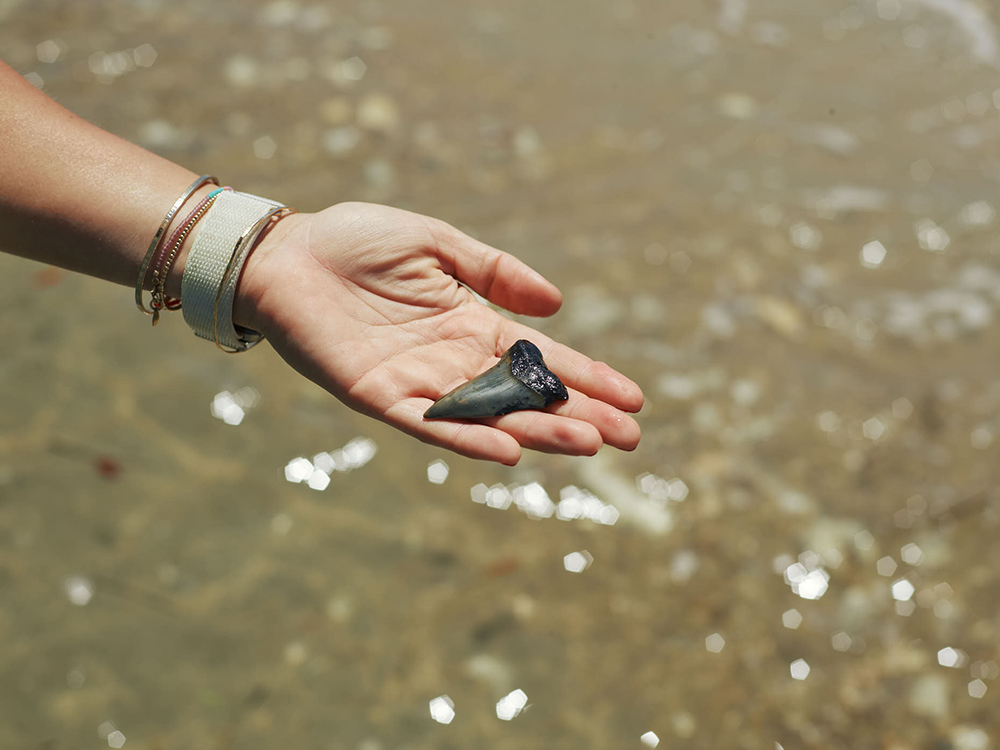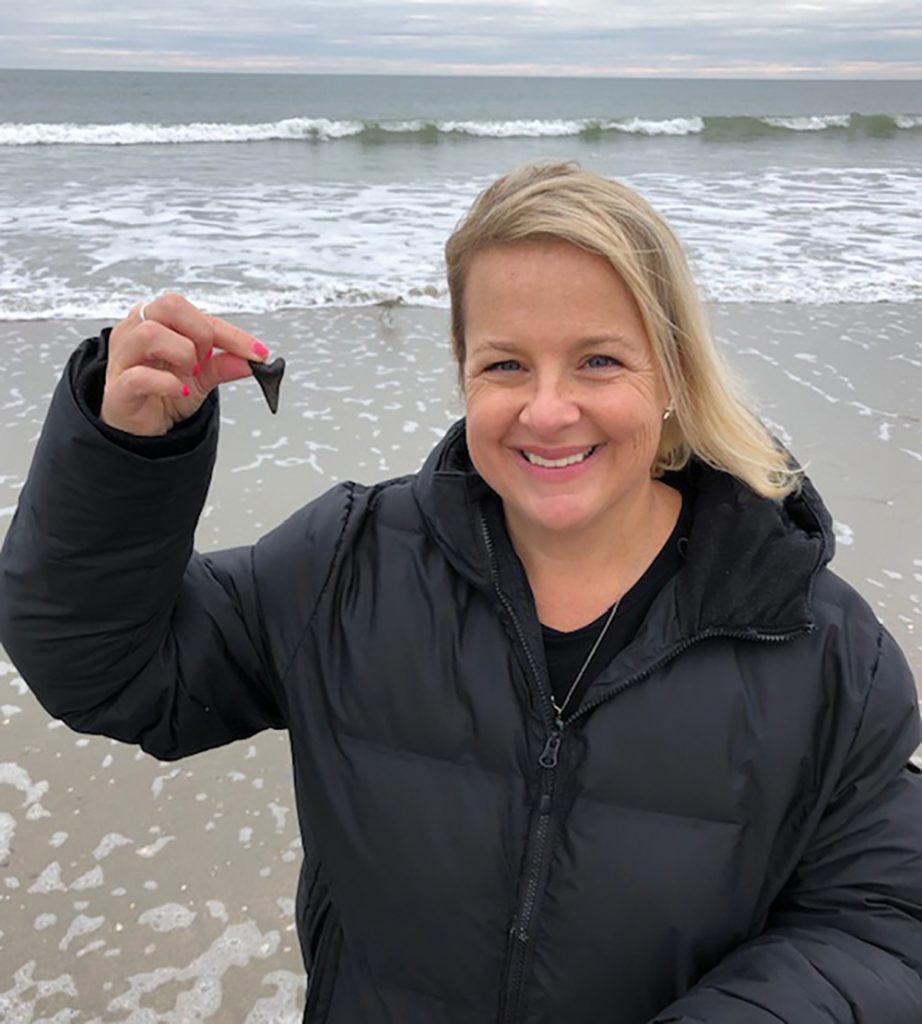We spoke to experienced fossil hunters to learn the best ways to find a shark and megaladon teeth along the North Carolina coast.
by Emma Deal, Nelie Tahssili & Eliza Martin
Looking for shark teeth is challenging — which makes finding them incredibly rewarding and fun. The North Carolina Coast is a particular hot spot for fading fossilized shark teeth. But if you don’t know where to look or what to look for, you may just pass them by. “Anyone can do it, but you have to have an ‘eye’ for it,” says Kammerer. We had our experts share their tips.
Visit a Fresh Beach
Shark teeth come to the surface of the sand when it’s been recently churned up, like after a heavy storm or when a beach has been replenished with dredged sand. “Those are the best times to look for fossils on the shore, because a greater volume of fossil sediment is being pushed towards land,” says Kammerer. Noah says she has the best luck three or four days after a big storm.
Know the Tides
Hit the beach as the tide is receding — that’s when the waves churn up the sand that has been deposited on the beach during high tide, and there’s more beach exposed to search. “I just stand there in the water and wait for the tide to unearth the teeth,” says Barnes.
Get There Early
Early bird gets the… shark tooth? While low tide is ideal, “at sites with a lot of fossil hunting, I advise getting there early because sometimes the best specimens from the previous night get ‘collected out’ by other people,” says Kammerer.
Bring a Bucket
… and that’s it. The easiest teeth to find will be right on the surface, so there’s no need for shovels or sifters. “You don’t need any gear, you want your hands to be free,” says Oliphant.
Search in Shell Beds
As the tide goes out, it tends to deposit shells and pebbles along the high tide in collections called shell beds. “The teeth tend to be concentrated with shells and other objects that are about the same size and density,” says Hunter Mooney, a diver with Carolina Beach Fossils.
Train Your Eye
While shark teeth can vary in size, shape and color, most fossilized teeth are small (about the size of the tip of your finger), triangular in shape and made of shiny black material. This distinguishes them from other shells, which tend to be more rounded and in lighter shades of brown, white or gray. As you scan the beach, look for objects that glint in the sun, and “pick up everything that’s black,” says Oliphant.
Study up on Fossils
As you start having luck finding shark teeth, head to a museum or aquarium to learn about what kind of fossils you have, suggests Kammerer. Different shark species have teeth with different shapes: some are long and narrow, others are wider or will have a more serrated edge. As you learn more about the different shapes, there will be more to discover on the shore, as well!
Click here to learn about the best North Carolina beaches for finding shark teeth!
This article originally appeared in the July 2023 issue of WALTER magazine.







Pingback: From the Deep: Shark Teeth on the North Carolina Coast - WALTER Magazine
Pingback: The Best North Carolina Beaches to Find Shark Teeth - WALTER Magazine